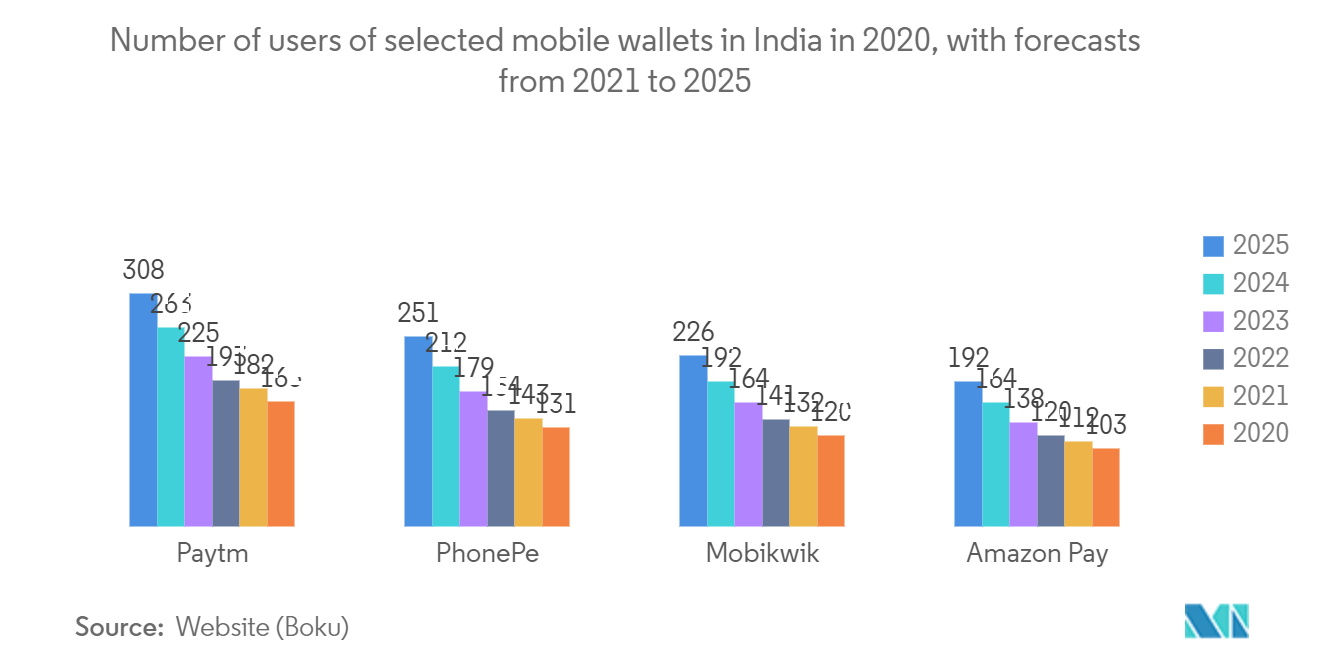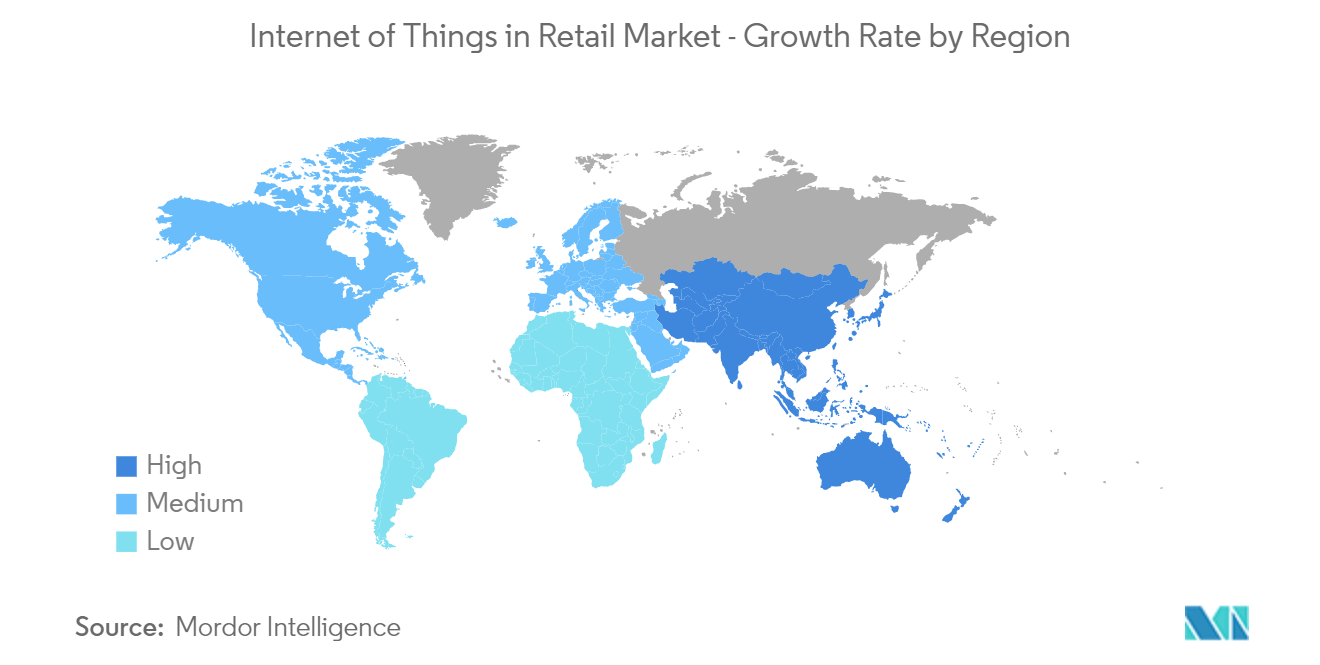Market Trends of Internet of Things in Retail Industry
This section covers the major market trends shaping the IoT in Retail Market according to our research experts:
Software Component Expected to Hold Significant Share
- The significant growth of internet shopping can be attributed to higher transaction values and increased order frequency. IoT can optimize supply chain management, reduce inventory error, and decrease labor costs. Ultimately, IoT can help the traditional brick-and-mortar shop compete with today's online-first shopping world by exponentially improving customer experience and reducing unnecessary expenses.
- Different software solutions providers provide IoT for the retail sector's betterment. Some of them are Qliktag, Evrythng, ThinFilm NC solutions, Gimble, Kaa Projects, Wise Shelf, Swirl, Memomi, Authentic or Not, Queuehop, and many others.
- Moreover, NFC-enabled technology creates immense growth opportunities for retailers to inform and persuade shoppers. For instance, national supermarket chain Kroger Co. piloted smart shelf tags to display product information. Moreover, the NFC provides significant functionalities to IoT by solving the challenges of unpowered objects lacking network access, providing the simplest, most intuitive way to indicate a user's interest in taking action, and connecting devices easily and intuitively. Hence, an increase in NFC solutions usage is penetrating the retail market, driving the market significantly.
- Companies like Paytm made headlines last year as it declared its plans for a USD 2.2 billion IPO. The country's highest-valued startup at USD 16 billion, the Noida-based fintech first known as One97 Communications originally started as a significant provider of digital phone payments. Still, it grew to cover insurance sales, ticket booking, and other digital financial services. PhonePe and Paytm were more commonly used than credit or debit cards for online shopping in India.
- According to the website (Boku), Google Pay, PhonePe, and Paytm are expected to grow by hundreds of millions of users in India by the end of 2025. Hence, with the rise in the number of users of mobile wallets, the market for IoT in the retail sector is expected to witness significant growth opportunities throughout the forecast period.

North America to Hold Largest Share
- The advent of e-commerce technologies and the incorporation of the best in-store experience have been the major factors responsible for the paradigm shift in US retailing. Retailers are prioritizing their spending toward omnichannel retailing by moving from purely online stores to brick-and-mortar stores and vice-versa.
- In addition, with an increasing number of consumers embracing the smart home environment in the United States, the expansion of IoT is on the rise across the region. As a result, retailers are aiming to develop their solutions around home assistants. The success of Alexa and Google Home are clear indicators of the trend. Also, deploying IoT to track inventory using sensors and RFID tags enables real-time management and streamlining of the entire flow. Amazon's warehouses in the United States have smart shelves, which help the retailer monitor and track inventory items, reducing human errors while reordering items and eliminating overstocking products in warehouses.
- The significant growth of internet shopping can be attributed to higher transaction values and increased order frequency owing to convenience. The retail Industry in America is divided into brick-and-mortar retailers boasting of successful online strategies and surviving the competition with Amazon. Moreover, the Internet of Things is also being widely used by retailers to provide a personalized experience to their customers. For example, Walmart uses IoT in its United States warehouses to gain insights about popular products on social media.
- Companies like Walmart, Target, and Best Buy have also found the right mix of products and services, like selling groceries, to keep shoppers coming into their stores. While Amazon remains the leader in e-commerce, these players are using their physical stores to fulfill online orders, simultaneously increasing their digital promotions.
- In December last year, Amazon planned to bring a TikTok-like shopping experience to its app. The company declared the launch of Inspire, a new short-form video and photo feed that enables consumers to explore ideas and products and shop from content created by brands, influencers, and other customers. The feature is primarily designed to draw consumers' attention away from apps like TikTok, where brands can directly market to consumers, significantly driving sales on Amazon.com instead.


